- Home
- Alison Weir
Queen Isabella Page 2
Queen Isabella Read online
Page 2
Philip’s war with Edward I was the result of a long-standing feud over England’s possessions in France. In the twelfth century, through the marriage of Henry II to Eleanor of Aquitaine, the empire of the Plantagenets, the dynasty that Henry founded, had extended from Normandy to the Pyrenees, while the royal demesne of France had been limited to the regions around Paris. By 1204, Henry’s son, King John, had lost most of the English territories, including Normandy, to the ambitious Philip II “Augustus” of France, and there were further French encroachments under John’s son Henry III, as successive French monarchs sought to broaden their domain. By the time of Edward I, all that remained of England’s lands in France was the prosperous wine-producing duchy of Gascony, the southern part of the former duchy of Aquitaine, along with the counties of Ponthieu and Montreuil, which had come to the English Crown through the marriage of Edward I to Eleanor of Castile in 1254.
Philip IV, who was vigorously carrying on his predecessors’ expansionist policy, not surprisingly had his eye on Gascony, and in 1296, he invaded and took possession of it. There were two ways to settle a conflict: by military force or by diplomacy. Edward I wanted Gascony back, and Philip wanted to drive a wedge between Edward and the Flemings, who were uniting against him. By 1298, the two Kings were engaged in secret negotiations for a peace. Then Pope Boniface VIII intervened. In the spring of 1298, he suggested a double marriage alliance between France and England: his plan was that Edward I, a widower since the death of Eleanor of Castile in 1290, marry Philip’s sister Marguerite, while Edward’s son and heir, the Prince of Wales, be betrothed to Philip’s daughter Isabella, then two years old. Once this peace had been sealed, Gascony could be returned to Edward I.3
Boniface’s suggestion appealed to both parties; it conjured up for Philip the tantalizing prospect of French influence being extended into England and his grandson eventually occupying the throne of that realm; and for Edward I, it promised the return of Gascony and a brilliant match for his son. As the daughter of the King of France and the Queen of Navarre, Isabella was a great prize in the marriage market: no Queen of England before her had boasted such a pedigree.
The deal was agreed in principle, and two weeks later, on 15 May, King Edward appointed Henry de Lacy, Earl of Lincoln, to negotiate both marriages.4 In March 1299, Parliament accepted the terms negotiated by Lincoln, and on 12 May following, plans were set in hand for the proxy betrothals. Three days later, the Earl of Lincoln, Amadeus, Count of Savoy, and the Earl of Warwick were appointed to act for Edward I and his son, and soon afterward, they departed for France. Edward I privately instructed the Count to find out as much as he could about the personal attributes of Marguerite of France, including the size of her foot and the width of her waist. The Count reported back that she was “a fair and marvellously virtuous lady,” pious and charitable.
The Treaty of Montreuil, which provided for Isabella’s future betrothal to Edward of Caernarvon, was drawn up on 19 June, ratified by Edward I and the Prince of Wales on 4 July, and amplified by the Treaty of Chartres on 3 August. Under its terms, Philip was to give Isabella a dowry of £18,000, and once she became Queen of England, she was to have in dower all the lands formerly held by Eleanor of Castile, which were in the interim to be settled by Edward I on Marguerite; these amounted to £4,500 per annum. Should Edward I default on the treaties, he would forfeit Gascony; if Philip defaulted, he would pay Edward a fine of £100,000.5 On 29 August, at the instance of Edward I, the King and Queen of France gave solemn guarantees that the marriages would take place,6 and in September, Marguerite of France, then aged twenty at most, arrived in England and was married to the sixty-year-old Edward I in Canterbury Cathedral. Against the odds, this proved to be a successful and happy union, and produced three children. In October 1299, Philip IV finally ratified the Treaty of Montreuil.7 “When love buds between great princes, it drives away bitter sobs from their subjects,” commented a contemporary.
In 1300, the French occupied Flanders, but two years later, they were humiliatingly defeated and massacred by the Flemings at Courtrai. Throughout this time, Edward I had continued to press for the immediate restoration of Gascony, but Philip would not agree to this until after the Prince of Wales had fulfilled his promise to marry Isabella,8 who was still too young to wed.
By April 1303, Edward I was losing interest in the alliance and was beginning to look elsewhere for a bride for his son.9 At this crucial point, fearing a war on two fronts, Philip IV played his trump card and agreed to restore the duchy of Gascony to Edward without further delay; his intention was, as he reminded Edward II in 1308, that it should in time become the inheritance of his grandchildren, the heirs of Edward and Isabella.10 Edward I was now satisfied, and the Treaty of Paris, which officially restored the duchy, was signed on the same day that young Isabella and Edward of Caernarvon were betrothed. There would be further conflict between Edward I and Philip IV, but nothing serious enough to break this new alliance. Isabella was now destined to be Queen of England.
Isabella was probably born in 1295. There is conflicting evidence as to the year. Piers of Langtoft says she was “only seven years of age” in 1299, which places her birth in 1292, the date given in the Annals of Wigmore.11 Yet she is described by both the French chronicler Guillaume de Nangis and Thomas Walsingham as being twelve years old at the time of her marriage in January 1308, which suggests she was born between January 1295 and January 1296. Given that twelve was the canonical age for marriage, and that in 1298, the Pope had stipulated that she should marry Prince Edward as soon as she reached that age,12 these dates are viable. In the same document of June 1298, the Pope describes Isabella as being “under seven years,” which places her birth at any time from 1291 onward. Furthermore, the Treaty of Montreuil (June 1299) provided for Isabella’s betrothal and marriage to take place when she reached the respective canonical ages of seven and twelve.13 So she must have reached seven before May 1303, and twelve before January 1308.
It has been suggested that Isabella had already reached the canonical age for marriage in 1305, when she and the Prince of Wales nominated representatives for a marriage by proxy.14 This did not take place because of continued squabbles over Guienne,15 but the fact that these nominations were made has been held as evidence that Isabella had then reached, or was soon to reach, the age of twelve, which would place her date of birth around 1293. Yet this theory is contradicted by a papal dispensation issued by Clement V in November 1305, giving the young couple permission to marry at once even though Isabella had not yet reached her twelfth year and was at present in her tenth year. This suggests a birth date between November 1294 and November 1295. The waters are muddied still further by a decree issued by Philip IV in 1310, in which Isabella is referred to as his “primogenita,” or “firstborn,” which suggests that she was born in 1288 at the latest, as her eldest brother Louis was born in October 1289. This date conflicts with all the other evidence and is probably the result of an error on the part of the official drawing up the document.
In conclusion, the evidence in the papal dispensations and documents and the Treaty of Montreuil is likely to be more reliable, and taken together, it supports a birth date between May and November 1295, which in turn is supported by the statements of Guillaume de Nangis and Thomas Walsingham. This would make Isabella seven years old at the time of her betrothal and twelve years old at the time of her marriage.
Isabella grew up in a period when society regarded women as inferior beings. “We should look on the female role as a deformity, though one which occurs in the ordinary course of nature,” states a thirteenth-century edition of Aristotle’s Generation of Animals. “Woman is the confusion of man, an insatiable beast, a continuous anxiety, an incessant warfare, a daily ruin, a house of tempest and a hindrance to devotion,” fulminated the misogynistic Vincent de Beauvais in the thirteenth century. In 1140, the canon lawyer Gratian asserted that “women should be subject to their men. The natural order for mankind is that women shoul
d serve men and children their parents, for it is just that the lesser serve the greater.”
The husband was his wife’s lord and master: he was to her as Christ to the Church. Thus, if a woman murdered her husband, she was guilty of petty treason and could be burned at the stake. He, however, had the right to beat her if she displeased him; indeed, it was “the husband’s office to be his wife’s chastiser.” He was not supposed to kill or maim her through such punishment, although, according to the legal code enshrined in the Customs of Beauvais, “in a number of cases men may be excused for the injuries they inflict on their wives, nor should the law intervene.”
It was a woman’s duty to love her husband and show him due obedience. In 1393, an anonymous Parisian writer instructed wives to obey their husbands’ commandments, since “his pleasure should come before yours,” and he advised them to “cherish your husband’s person, give him plenty of attention, and the cheer of other delights, privy frolics, lovings and secret matters. Do not be quarrelsome, but sweet, gentle and amiable. And if you do all this he will keep his heart for you, and he will care nothing for other women.” The onus was always on the wife to maintain the stability of a marriage.
In law, women were regarded as infants, so they had few legal rights. They were viewed as assets in the marriage market, chattels in property or land deals, or prizes in the game of courtly love, and their roles were very narrowly defined. When a group of noblewomen attempted to usurp male privilege and arrange a tournament in 1348, God “put their frivolity to rout by heavy thunderstorms and divers extraordinary tempests.”16 In the fifteenth century, one of Joan of Arc’s chief crimes was the adoption of male attire, which was seen as tantamount to heresy.
Some highborn ladies were taught to read and write, but they were the fortunate few. In the thirteenth century, Philip of Navarre thought that generally women “should not learn to read or write unless they are going to be nuns, as much harm has come from such knowledge. For men will dare to send letters near them containing indecent requests in the form of songs or rhymes or tales, which they would never dare convey by message or word of mouth. And the Devil could soon lead her on to read the letters or”—even worse—“answer them.”
Above all, in an age in which lineage and inheritance were paramount concerns, women were expected to be beyond moral reproach and to follow the virtuous example of the Virgin Mary. But because they were descended from Eve, who had committed the original sin, and were thus more likely to give in to temptation than men, they had to carefully guard their reputations. There was much comment on the frailty of women. “Wheresoever beauty shows upon the face, there lurks much filth beneath the skin.” This anonymous Parisian writer also observed that “every good quality is obscured in the woman whose virginity or chastity falters. Women of sense avoid not only the sin itself, but also the appearance of it, so as to keep their good name. So you see in what peril a woman places her honour and that of her husband’s lineage and of her children when she does not avoid the risks of such blame.”
The Church taught that sex was primarily for procreation, not pleasure, and that intercourse was only permissible within marriage. Adultery was regarded as exceptionally sinful, especially on the part of a wife, for it jeopardized her husband’s bloodline. In 1371, the author of the Book of the Knight of La Tour Landry insisted that “women who fall in love with married men are worse than whores in brothels, and a gentlewoman who has enough to live on yet takes a lover does it from nothing but the carnal heat of lust.” A husband who caught his wife in adultery had the legal right to kill her.
There were, of course, many women who circumvented the conventions. Many ran farms or businesses, or administered estates. Some even practiced as physicians. A few wrote books. And queens, by virtue of their exalted marital status, could exercise political authority and the power of patronage. Isabella would have been brought up to know exactly what was required of her as a daughter and as a wife, and she had before her the example of her mother, who was a queen in her own right.
Isabella was born into the most illustrious royal house in Europe. It had gained its reputation largely through the careers of its thirteenth-century kings and the canonization in 1297 of her great-grandfather, Louis IX, one of the greatest of medieval monarchs. Her grandfather, Philip III, was a mild, mediocre man who briefly carried on the work of the sainted Louis, but it was left to his son, who became Philip IV in 1285 at the age of seventeen, to add to the prestige of the French monarchy. Philip IV extended the royal domain, effectively founded the Estates General, which evolved from his Paris Parlement, and centralized the royal administration.
In 1284, Philip had made a brilliant marriage with the eleven-year-old Jeanne, Queen of Navarre, who had succeeded to the throne of that kingdom in infancy. The acquisition of Navarre and Jeanne’s counties of Champagne and Brie further strengthened Philip’s power.
Philip IV was “the most handsome of men,”17 and his stunning good looks earned him the nickname “Philip the Fair”: in those days, an indication of good looks, not blond men. Exceptionally tall and strongly built, he also possessed a cold, calculating intelligence and a ruthless character. Yet there was, too, an ascetic side to his nature: beneath his costly velvets and furs was concealed a hair shirt, to mortify the flesh, and he regularly whipped himself with the monastic discipline on the orders of his confessor. Those who met him found his fixed stare, his long silences, and his mysterious manner disconcerting. “He is neither a man, nor a beast, but a statue,” commented the Bishop of Pamiers.
As a ruler, Philip was authoritarian, despotic, efficient, and feared by his subjects. He was a resolute defender of the royal prerogative and obsessed with the acquisition of wealth. Being perennially short of money, he often resorted to drastic measures to get it. He dispossessed the Jews in his realm of vast sums, confiscated much of the property of the Lombard bankers, taxed the Church heavily, sold peerages to commoners, and notoriously, debased the coinage several times. His daughter Isabella would inherit his obsession with money and his avarice.
Isabella’s mother, Jeanne of Navarre, was no beauty. Plump and plain, with a Moorish cast to her features, she was a dignified, pious, and intelligent woman, capable of managing her kingdom of Navarre and her other domains, although she tactfully adopted her husband’s reforms in France as her administrative model. Twice, with great vigor, she successfully defended her territories, first against the Count of Bar and second against the combined might of Aragon and Castile. In 1298–99, the Queen, along with her mother, Blanche of Artois, and the Queen Dowager of France, Marie of Brabant, was actively involved in the diplomatic negotiations for her daughter Isabella’s betrothal.
Generally, however, being frequently preoccupied with the business of childbearing, Jeanne chose not to dabble in French politics and confined her influence to the domestic and intellectual spheres. In Paris in 1304, she founded the College of Navarre, also known as the Hôtel de la Reine Jeanne, as a cultural center for the city’s flourishing university. When Philip ventured forth on his frequent tours of the French provinces, Jeanne invariably went with him. Theirs had been a love match—on her part, at least—for they had been brought up together at the château of Vincennes, after Jeanne’s mother had seen fit to place her fatherless daughter under the protection of the King of France.
The career of her mother seems to have impressed itself upon Isabella’s consciousness; she inherited many of her mother’s abilities and may well have tried to emulate her example in later life. Certainly, she learned from Jeanne what a woman was capable of in a male-dominated society.
Philip’s marriage to Jeanne produced seven children. Three sons survived childhood: the heir, Louis, born in 1289 in Paris; Philip, born around 1292–93 at Lyons; and Charles, probably born in 1294. All grew into “very handsome and great knights.”18 Isabella was the sixth child. Her two older sisters, Marguerite and Blanche, died young in or after 1294, and her younger brother, Robert, born in 1297, died at the
age of eleven in 1308 at Saint-Germain-en-Laye. As the only surviving daughter, Isabella was much favored by her father and may well have been a little spoiled by him.
Through the marriages of his children, Philip was resolved to extend France’s influence and borders. With any luck, his grandson, born of the union between Isabella and Edward, would sit on the English throne. In September 1305, Philip’s eldest son, Louis,19 was married to fifteen-year-old Marguerite of Burgundy, a granddaughter of Saint Louis on her mother’s side, and the daughter of Robert II, Count of Burgundy. In 1307, Charles was married to Marguerite’s cousin, eleven-year-old Blanche of Burgundy, and Philip was married to the latter’s sister Jeanne; they were the daughters of Othon IV, Count of Burgundy. Through these unions, Franche-Comté and part of Burgundy became annexed to the French Crown.
In the early fourteenth century, France was the wealthiest and most heavily populated country in Europe: it had an estimated 21 million inhabitants, compared to 4.5 million in England; 80,000 people lived in Paris, twice the number who lived in London. French society was essentially feudal, and the royal domain now covered more than half of modern France; the rest was made up of vassal feudatories. The Capetian dynasty20 had ruled since 987, since when the Crown had passed unfailingly from father to son.
France at that time was at the hub of European culture, and Paris was the intellectual center of Christendom. King Philip himself was a generous and discriminating patron of the arts, and Queen Jeanne, who descended from the brilliant and scholarly counts of Champagne, set a high cultural standard at court; in her retinue, she kept minstrels and trouvères, who provided sophisticated musical entertainment.

 Richard III and the Princes in the Tower
Richard III and the Princes in the Tower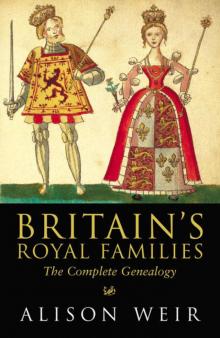 Britain's Royal Families: The Complete Genealogy
Britain's Royal Families: The Complete Genealogy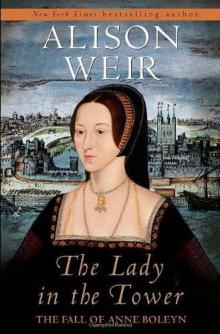 The Lady in the Tower: The Fall of Anne Boleyn
The Lady in the Tower: The Fall of Anne Boleyn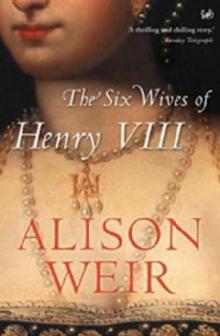 Six Wives of Henry VIII
Six Wives of Henry VIII Elizabeth of York: A Tudor Queen and Her World
Elizabeth of York: A Tudor Queen and Her World Captive Queen
Captive Queen Innocent Traitor
Innocent Traitor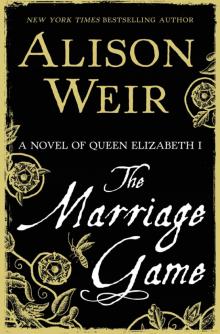 The Marriage Game
The Marriage Game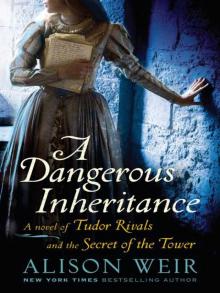 A Dangerous Inheritance
A Dangerous Inheritance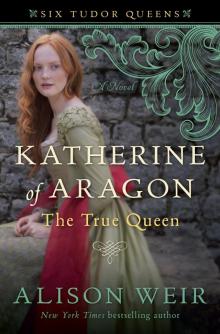 Katherine of Aragón: The True Queen
Katherine of Aragón: The True Queen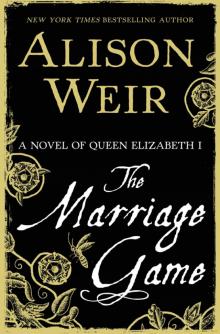 The Marriage Game: A Novel of Queen Elizabeth I
The Marriage Game: A Novel of Queen Elizabeth I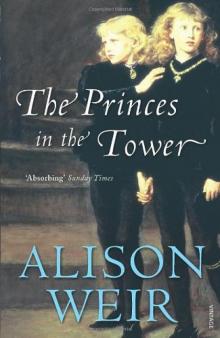 Princes in the Tower
Princes in the Tower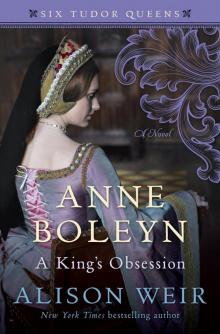 Anne Boleyn: A King's Obsession
Anne Boleyn: A King's Obsession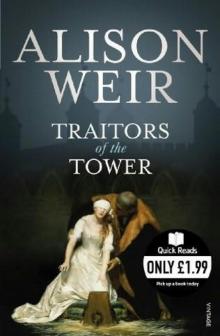 Traitors of the Tower
Traitors of the Tower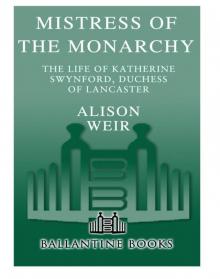 Mistress of the Monarchy: The Life of Katherine Swynford, Duchess of Lancaster
Mistress of the Monarchy: The Life of Katherine Swynford, Duchess of Lancaster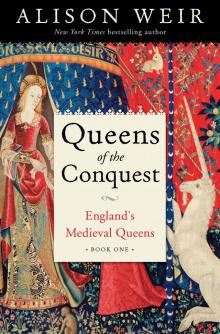 Queens of the Conquest: England’s Medieval Queens
Queens of the Conquest: England’s Medieval Queens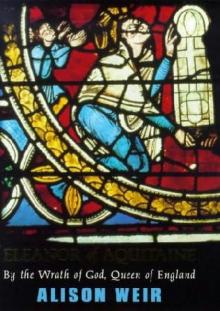 Eleanor of Aquitaine: A Life
Eleanor of Aquitaine: A Life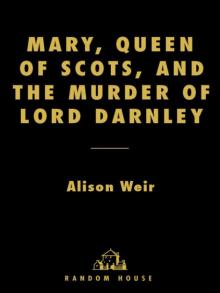 Mary, Queen of Scots, and the Murder of Lord Darnley
Mary, Queen of Scots, and the Murder of Lord Darnley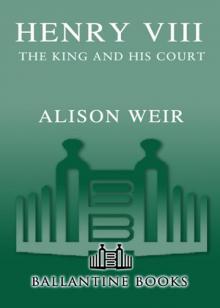 Henry VIII: The King and His Court
Henry VIII: The King and His Court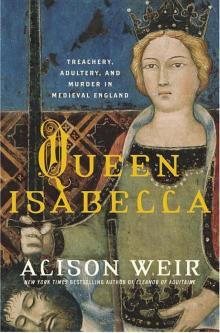 Queen Isabella: Treachery, Adultery, and Murder in Medieval England
Queen Isabella: Treachery, Adultery, and Murder in Medieval England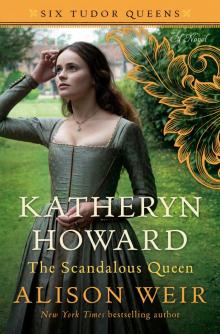 Katheryn Howard, the Scandalous Queen
Katheryn Howard, the Scandalous Queen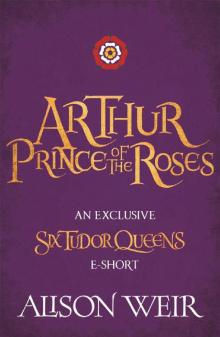 Arthur- Prince of the Roses
Arthur- Prince of the Roses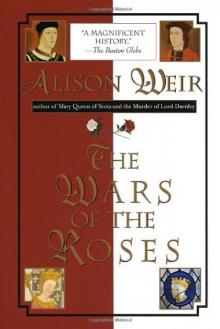 The Wars of the Roses
The Wars of the Roses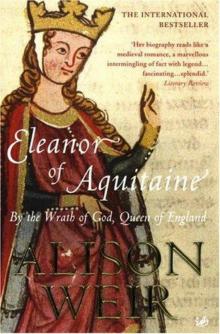 Eleanor of Aquitaine: By the Wrath of God, Queen of England
Eleanor of Aquitaine: By the Wrath of God, Queen of England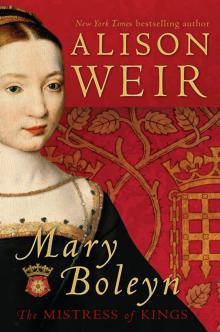 Mary Boleyn: The Great and Infamous Whore
Mary Boleyn: The Great and Infamous Whore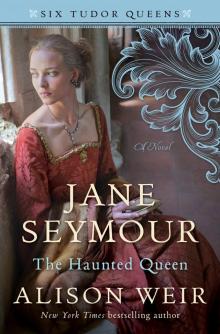 Jane Seymour: The Haunted Queen
Jane Seymour: The Haunted Queen Anna of Kleve, the Princess in the Portrait
Anna of Kleve, the Princess in the Portrait Lancaster and York: The Wars of the Roses
Lancaster and York: The Wars of the Roses The Grandmother's Tale
The Grandmother's Tale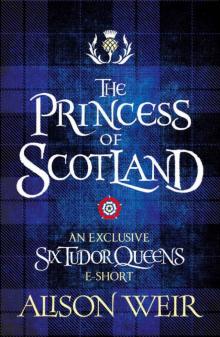 The Princess of Scotland (Six Tudor Queens #5.5)
The Princess of Scotland (Six Tudor Queens #5.5)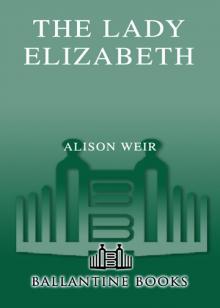 The Lady Elizabeth
The Lady Elizabeth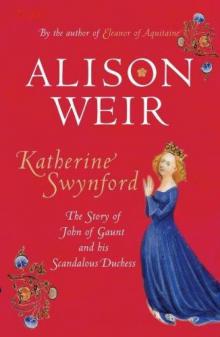 Katherine Swynford: The Story of John of Gaunt and His Scandalous Duchess
Katherine Swynford: The Story of John of Gaunt and His Scandalous Duchess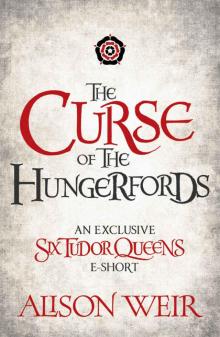 The Curse of the Hungerfords
The Curse of the Hungerfords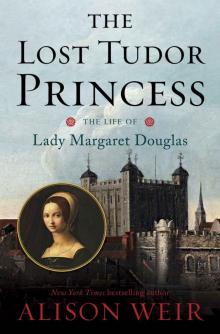 The Lost Tudor Princess: The Life of Lady Margaret Douglas
The Lost Tudor Princess: The Life of Lady Margaret Douglas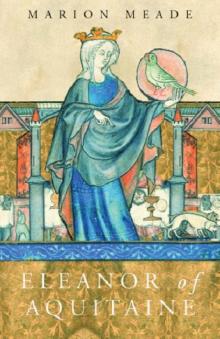 Eleanor of Aquitaine
Eleanor of Aquitaine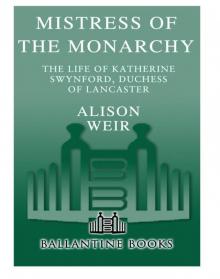 Mistress of the Monarchy
Mistress of the Monarchy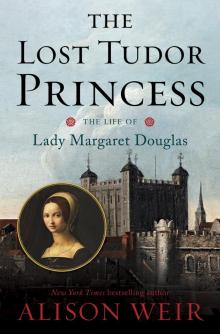 The Lost Tudor Princess
The Lost Tudor Princess Henry VIII
Henry VIII Anne Boleyn, a King's Obsession
Anne Boleyn, a King's Obsession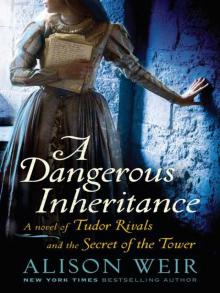 A Dangerous Inheritance: A Novel of Tudor Rivals and the Secret of the Tower
A Dangerous Inheritance: A Novel of Tudor Rivals and the Secret of the Tower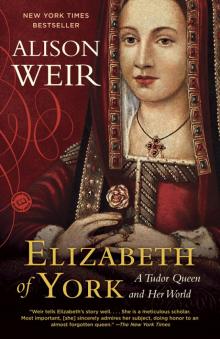 Elizabeth of York
Elizabeth of York Katherine of Aragon, the True Queen
Katherine of Aragon, the True Queen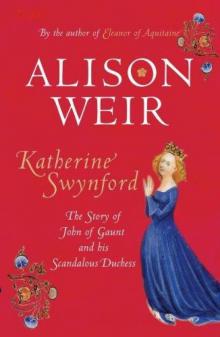 Katherine Swynford
Katherine Swynford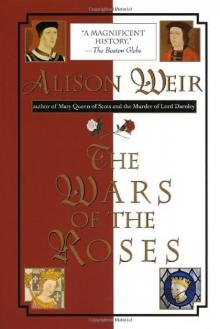 Wars of the Roses
Wars of the Roses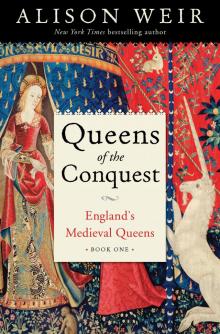 Queens of the Conquest
Queens of the Conquest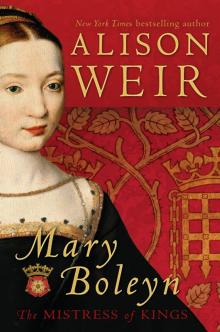 Mary Boleyn
Mary Boleyn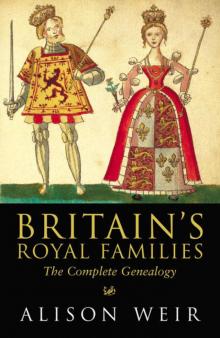 Britain's Royal Families
Britain's Royal Families The Tower Is Full of Ghosts Today
The Tower Is Full of Ghosts Today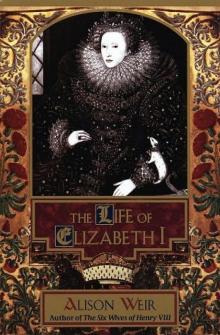 Life of Elizabeth I
Life of Elizabeth I Anne Boleyn A King's Obssession
Anne Boleyn A King's Obssession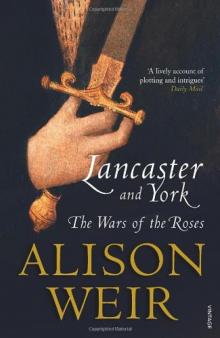 Lancaster and York
Lancaster and York Jane Seymour, the Haunted Queen
Jane Seymour, the Haunted Queen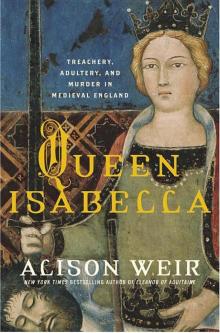 Queen Isabella
Queen Isabella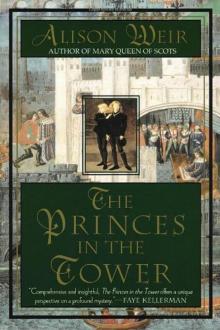 The princes in the tower
The princes in the tower